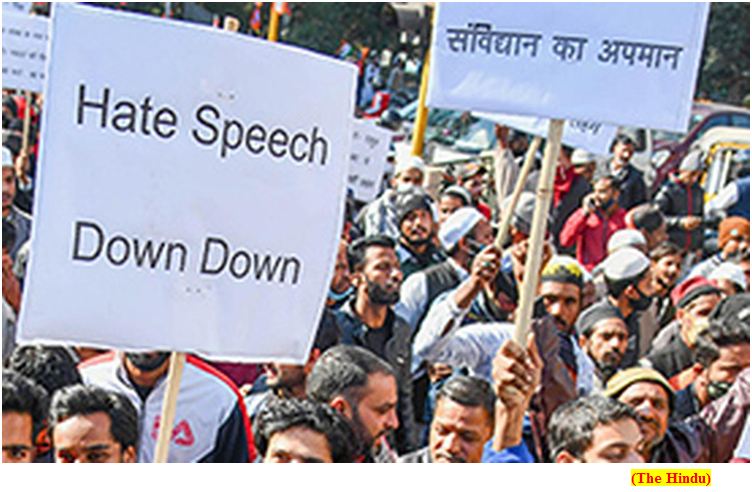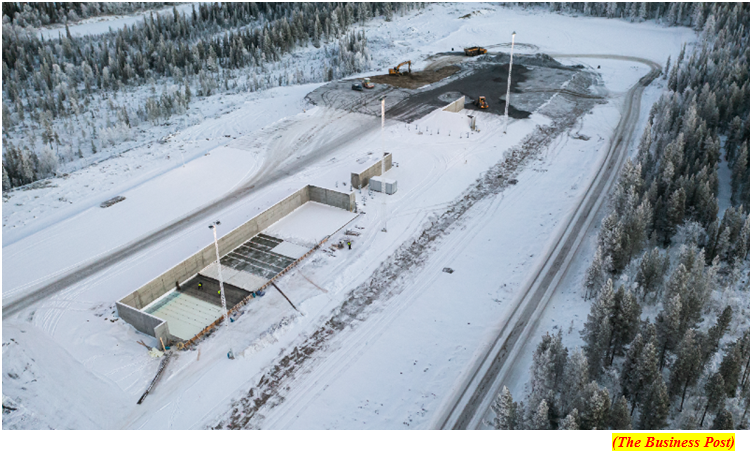How PSInSAR satellite technique helped detect Joshimath sinking (GS Paper 3, Science and Tech)

Why in news?
- The PSInSAR satellite technique used to observe the gradual sinking of Uttarakhand's Joshimath town is a powerful remote sensing tool capable of measuring and monitoring displacements in the Earth's surface over time.
Details:
- The Indian Institute of Technology (IIT) Ropar in Punjab had in 2021 predicted a large-scale subsidence in Joshimath.
- The predictions ranged between 7.5 and 10 centimetres (cm) displacement for buildings in Joshimath which is enough to cause large scale cracks in buildings.
PSInSAR:
- The researchers collected remote sensing data using the Persistent Scatterer Synthetic Aperture Radar (PSInSAR) Interferometry technique to observe the sinking.
- A Synthetic Aperture Radar (SAR) is a form of radar that is used to create two-dimensional images or three-dimensional reconstructions of objects, such as landscapes.
Scattering:
- Scattering refers to a change in the direction of light because of its collision or interaction with another particle, say buildings.
- The buildings are "scatterers", and because they are usually static and do not record movements, they are referred to as "permanent scatterers" or "persistent scatterers".
- In PSInSAR, the persistent scatterers in question are imaged over a period of time at regular intervals. Therefore, successive images are acquired.
- Any change in the signal received after having been scattered by the target is due to change in the target movement.
Investigation by IIT-Ropar:
- The IIT-Ropar team had been investigating the surface displacement of Tapovan, a tourist spot near Joshimath, after the floods of February 2021, when they noticed that Joshimath was recording a surface displacement of up to 8.5 centimetres which was on an upward trend.
- Joshimath, being only 15 kilometres away from Tapovan, was captured in the satellite images, enabling the scientists to go back in time up to January 2020 and look at all the data, this time to study the surface displacement of the town.
- The scientists then used this remote sensing data along with artificial intelligence (AI) algorithms to predict the land subsidence in Joshimath.
- A study by ISRO's National Remote Sensing Centre (NRSC) shows the town of Joshimath sinking by up to 8.9 centimetres between April and November 2022. This recorded displacement falls within the range predicted by the IIT Ropar study.
- The displacement map from the study shows that the subsidence is maximum in areas with settlements and around the Narsingh temple area.
What exactly is land subsidence and how does it differ from a landslide?
- Land subsidence is when the normal ground itself starts sinking or gets displaced all together.
- On the other hand, landslides occur when a mass of rock located at higher elevation falls down on a lower surface or road either due to slip action or under influence of gravity.
- While landslides are a highly localised phenomenon, land subsidence usually covers a larger area.
- Land subsidence is the slow settling of ground over a large area, which can happen in plains as well. However, in a landslide, a mountain slope fails due to different reasons, one of them being heavy rainfall.
The buck stops with the government to stop hate speech, hate crimes: Supreme Court
(GS Paper 2, Judiciary)
Why in news?
- The Supreme Court recently said the “buck ultimately stops with the government” to clamp down on hate speech and hate crimes, as they are offences committed on the society.
- The government agreed that hate could not hide behind the colour of any religion.

Background:
- The remarks from the Bench came after Uttar Pradesh informed the court that it had registered 580 cases of hate speech in 2021-2022. Of these, 160 were suo motu registered by the police.
- Uttarakhand said that it had registered 118 cases.
TV channels:
- During the hearing, the court highlighted the problem of hate speech on television.
- It said that TV channels and their anchors have become tools to peddle particular “agendas” through the powerful visual medium, creating divisiveness and violent instincts in the society to win their TRP (or television rating point) wars.
- Asking whether any anchor has been “taken off air” to send a message against triggering hate or bias on TV, the court said that “if freedom is exercised with an agenda or to promote an agenda, you are not actually serving the people but some other cause. Then you have to be dealt with.”
- The court said that the anchors and the editorial heads of the channels decided the content, adding that it was also dictated by the “money” behind the channels.
Name-calling is denigrating:
Media must self-regulate:
- Additional Solicitor General said that the government intervened against the media only in “exceptional circumstances”. The onus was on the media to self-regulate and exercise prior restraint.
- The government was considering legislation and even “comprehensive” amendments to the Code of Criminal Procedure to address the issues highlighted by the court.
- Meanwhile, individuals wronged could avail of either the mechanisms under the Indian Penal Code or the defamation law.
Indian Constitution and hate speech:
Freedom of Speech and Expression:
Article 19(2):
- A reasonable restriction has been put forth by the Indian constitution where the word reasonable should strike a balance between the use and misuse of this freedom.
Sweden inaugurates new satellite launch site
(GS Paper 2, Polity and Constitution)
Why in news?
- Just days after a failed UK satellite launch, Sweden inaugurated new launching site as the race heats up to be the first country to send satellites into orbit from the European continent.
- The “Spaceport Esrange”, has been described as “mainland Europe’s first satellite launch complex”.

Key Highlights:
- The site is an extension of the Esrange Space Centre in Sweden’s Arctic, around 40 kilometres (25 miles) from the town of Kiruna.
- Around 15 million euros ($16.3 million) have been invested in the site, which is expected to serve as a complement to Europe’s space hub at Kourou in French Guiana.
- It will also provide launch capabilities at a time when cooperation with Russia and the Baikonur launch site in Kazakhstan has been curtailed by the war in Ukraine.
Other European spaceports in the race:
- Projects in Portugal’s Azores archipelago, Norway’s Andoya island, Spain’s Andalusia and Britain, among others, are all vying to be the first to succeed.
- Rocket Factory Augsburg (RFA), a German specialist in smaller launchers that are increasingly used by countries and firms sending more compact satellites into space, said recently its first launch would take place at SaxaVord in the Shetland Islands at the end of 2023.
- The satellite industry is booming, with the number of satellites in operation in 2040 expected to reach 100,000, the SSC said, compared to 5,000 now.
Way Forward:
- Esrange’s state-owned operator, the Swedish Space Corporation (SSC), aims to launch its first satellite from the site “in the first quarter of 2024”.
- That would make Sweden the first country in continental Europe excluding Russia to send up a satellite from its soil.
- With a reusable rocket project called Themis, Esrange will also host the European Space Agency’s tests of rockets able to land back on Earth, similar to those used by SpaceX, one of the company’s owned by the billionaire Elon Musk.




